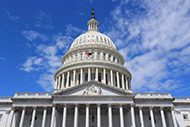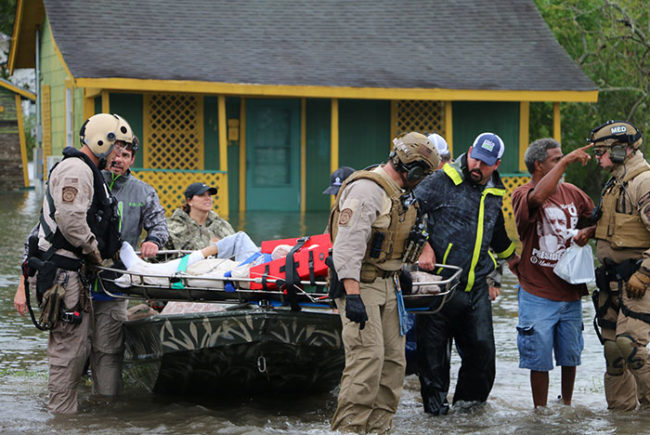AHA outlines health care priorities with President-elect Trump
The American Hospital Association (AHA) this week shared with President-elect Donald Trump its public policy priorities for the new administration.
“In today’s transformative and challenging environment, we are proud of the contributions of America’s hospitals and health systems, and are encouraged by the opportunities to lead our health care system into the future,” wrote AHA President and CEO Rick Pollack. “To help advance health in America, we ask that your administration — in collaboration with Congress and the courts, and in partnership with health care providers — help modernize the public policy environment to enhance providers’ ability to improve care and make it more affordable for patients.”
The AHA outlined the following priorities in its letter:
- Reduce regulatory burden.
- Enhance health care affordability and value.
- Promote quality and patient safety.
- Ensure access to care and coverage.
- Advance health system transformation and innovation.
Read the letter for more details on each priority.
Joint Commission changes process for interim life safety measures
The Joint Commission has changed the way it documents interim life safety measures (ILSMs) in requirements for improvement. As part of its new process, if surveyors identify a deficiency that results in a requirement for improvement (RFI), they will ask the health care organization which ILSMs will be implemented until corrective actions are completed. ILSM selections must be based on the organization's ILSM policy, and surveyors will record the selected measures into the RFI.
The American Society for Healthcare Engineering states that “health care facility managers should be familiar with their organization's ILSM policy and be ready to appropriately apply ILSMs during the survey.”
The new rule is particularly important considering that the Joint Commission now requires compliance with the National Fire Protection Association’s 2012 Life Safety Code. The Joint Commission states that if noncompliance with the Life Safety Code is discovered, the health care organization being surveyed will need to implement its ILSM policy.
EPA publishes hazardous waste generator final rule
The Environmental Protection Agency (EPA) administrator signed the final Hazardous Waste Generator Improvements Rule Oct.28. The rule, which will be published in the Federal Register in the coming weeks, finalizes an update to the hazardous waste generator regulations to make the rules easier to understand, facilitate better compliance, provide greater flexibility in how hazardous waste is managed and close important gaps in the regulations.
Two key provisions in which EPA is finalizing flexibility are:
- Allowing a hazardous waste generator to avoid increased burden of a higher generator status when generating episodic waste provided the episodic waste is properly managed;
- Allowing a very small-quantity generator to send its hazardous waste to a large-quantity generator under control of the same person.
The EPA is providing a prepublication version of the final rule for review.
FDA updates information on automated endoscope reprocessors
The Food and Drug Administration (FDA) updated its list of validated automated endoscope reprocessors (AERs) to include Medivators’ CER Optima AER. The FDA states that the product shows adequate validation test results for open- and closed-channel duodenoscopes. The organization says it is “looking into all critical factors contributing to patient infections associated with exposure to duodenoscopes and how best to mitigate them, including how AERs are used in clinical settings.” The “AER Validation Testing Status” section of the web page is updated as validation test results from AER manufacturers are accepted.
Agency updates resource for CMS emergency preparedness rule
The Department of Health & Human Services’ Office of the Assistant Secretary for Preparedness and Response has updated its resource to help health care organizations comply with the Centers for Medicare & Medicaid Services’ new emergency preparedness rule. Most of the updates include answers to frequently asked questions regarding the new rule.
The rule became effective Nov. 15. Medicare and Medicaid Participating Providers must implement the new rule by Nov. 15, 2017.
Report looks at programs to improve health care access to disaster sites
A report released by Healthcare Ready looks at health care challenges presented by disruptions in private-sector access to disaster sites, and presents programs and resources for states and jurisdictions seeking to address them. The report, Access Denied, was commissioned and funded by the Department of Health & Human Services’ Office of the Assistant Secretary for Preparedness and Response.
The report aims to:
- Examine the challenges and impacts that disrupted access to disaster sites has on health care.
- Analyze current programs and solutions being used across the country to address this problem.
- Present recommendations informed by best practices from current programs.
- Provide technical resources for both public and private stakeholders.
WHO: Zika downgraded from world health emergency to 'significant' challenge
The World Health Organization (WHO) has declared that Zika virus is no longer a Public Health Emergency of International Concern. However, it does remain a “significant enduring public health challenge requiring intense action.”
According to the organization, the seasonal virus and its effects “represent a highly significant long-term problem that must be managed by WHO, state parties and other partners in a way that other infectious disease threats are managed.”
As of Nov. 30, 185 locally transmitted cases of the mosquito-borne virus had been reported in the continental U.S., all in Florida with the exception of one Texas case.





